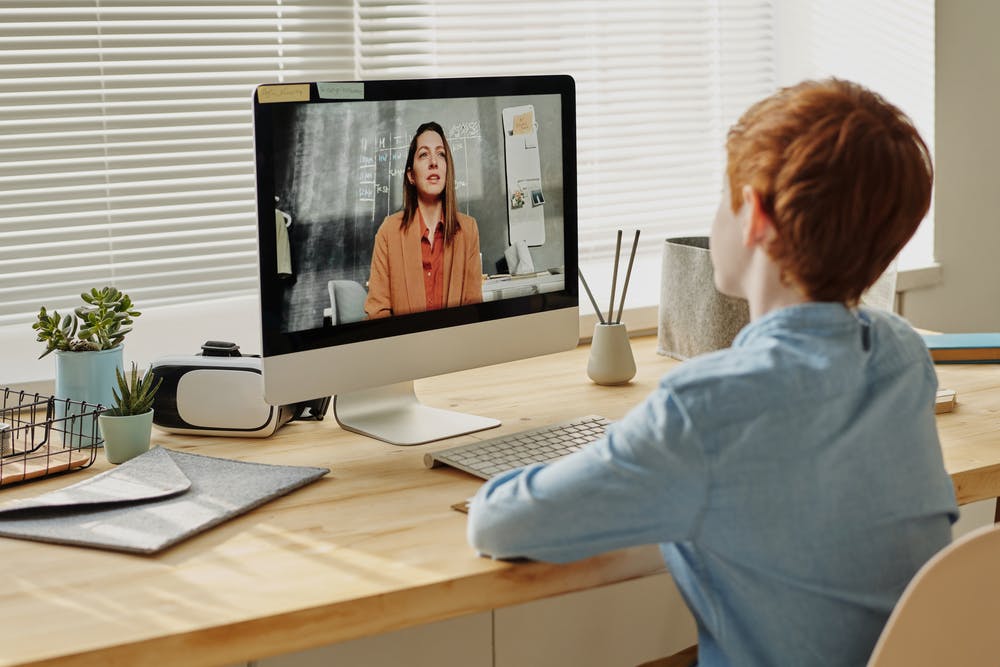| Academic and social development are likely to slip during online learning for many students. Patricia Perez, PhD, has a front-row view of how the shift from in-person school to distance learning is affecting many youth, and she sees a disturbing trend: Many children are struggling and parents are unsure how to help. Perez, a child development specialist who consults with children and families in the Chicago area, recently worked with a mother whose 16-year-old son was losing interest in going to college after graduating high school. Before the pandemic, he was passionate about math and science and participated in his school’s robotics and Model United Nations clubs, but his mood started changing after states began closing schools in the spring. As he logged on to his computer for Zoom school week after week, he started sleeping more during the day and became more isolated from friends and family members. “He’s not motivated anymore,” says Perez, who is also an associate professor of international psychology at The Chicago School of Professional Psychology. “Young people like to make plans for the future, and it’s difficult to do that when they don’t know how long this new way of life will last.” Although U.S. school districts that chose a remote learning model had more time to prepare for online school this fall than in the spring, psychologists who specialize in education research are concerned about how kids will cope psychologically with the ongoing loss of access to the friends, teachers, and routines associated with going to a physical campus. Research shows that the school environment is critical for fostering academic motivation and social development, and many students rely on schools for mental health care. Among adolescents who received mental health services between 2012 and 2015, 35% received these services exclusively from school settings, according to data from the National Survey on Drug Use and Health (Ali, M. M., et al., Journal of School Health, Vol. 89, No. 5, 2019). “We have to be careful and acknowledge just how big a change this has been for kids and families,” says Beth Doll, PhD, a professor of educational psychology at the University of Nebraska–Lincoln. “We have taken away the context that supports their engagement in school and their overall well-being, plus they are dealing with the tremendous uncertainty about the future.” Missing ingredients for inspiration One of the reasons parents may see some children skipping assignments or playing online games during a study hall period is linked to the fact that relationships at school inspire motivation for many kids. “Kids are not used to learning in isolation,” Doll says. “In classrooms today, teachers have students learning in groups, discussing lessons, and asking peers for help.” Those moments of working alongside a friend or asking a teacher for guidance allow students to feel connected to others, and this sense of belonging influences students’ engagement in class. Allison Ryan, PhD, a professor in the combined education and psychology program at the University of Michigan, recently studied middle school students from more than 50 math and science classrooms, and she found that those who felt like they had friends and teachers who cared about them found classwork was more interesting, were more engaged in school, and were more confident that they could complete their work (Kilday, J.E. and Ryan, A.M., Contemporary Educational Psychology, Vol. 58, 2019). “Spending time with friends is often a student’s favorite part of school, and without that sense of belonging, it may be harder for kids to stay focused,” Ryan says. It’s also helpful for children to feel competent in their schoolwork to sustain motivation, explains Eric Anderman, PhD, an educational psychology professor who studies academic motivation at The Ohio State University. He worries about kids who are losing confidence during distance learning because it can be more difficult for teachers to provide individualized feedback. “One of the ways a teacher can help a student gain confidence is by breaking down challenging tasks into small, reasonable parts,” Anderman says. Without this kind of help, more kids may give up when they struggle to complete a math problem, social studies project, or other assignment—which increases the odds that they will make negative assumptions about their abilities, he says. A dearth of one-on-one interactions with teachers and peers is also likely to have an impact because those interactions help students develop fundamental social emotional skills, Doll explains. They learn to understand how another person is feeling, when to offer help, and when to apologize. “We’ll probably be seeing some socialization delays because they have not had a chance to practice these skills in a Zoom environment,” she says. Risks for disadvantaged youth Although learning online is affecting many of the nation’s 56 million K–12 students, psychologists such as Celeste Malone, PhD, are concerned that the shift to distance learning in many districts could pose even greater mental health challenges to children of color. “Communities of color typically have reduced access to mental health providers, but these kids need support more than ever right now,” says Malone, an associate professor in the school psychology program at Howard University in Washington, D.C. “They are more likely to have parents who are essential workers and experiences of grief and loss because of COVID, plus they are seeing persistent police brutality and unrest.” Adolescents from low-income households and who are from racial- and ethnic-minority groups are also more likely than other students to depend on schools to access mental health services, and Malone worries that these students are lacking much-needed psychological support (Ali, M. M., et al., Journal of School Health, Vol. 89, No. 5, 2019). Some of these students may also be particularly uncomfortable if they are required to keep their cameras on during class, says Walter Gilliam, PhD, director of the Yale University Child Study Center. “We’re asking students to allow peers and teachers into an intimate portion of their lives, and they may not want people to see their home environments,” he says. “What does that do to a child, and how does this influence a teacher’s impression of a child?” Gilliam has found that teachers’ implicit biases about race and gender affected their expectations of students, and teachers felt more empathetic toward students with challenging behaviors when the students were the same race as the teacher. “We are basically asking children to invite teachers into a social services home visit, but teachers are not trained to do that,” he says. Children with attention-deficit/hyperactivity disorder (ADHD) or other behavioral disorders are also likely to suffer academically and psychologically during distance learning, explains Lehigh University’s George DuPaul, PhD, who has focused his research on this student population. “They are already at risk of academic difficulties, peer relationship problems, and other mental health issues,” he says. “Distance learning is an accelerator of these existing challenges.” DuPaul has talked with many parents of these students who say parent-child conflicts have intensified with the lack of access to in-person special education services. The silver lining of Zoom school Although the mental health consequences of staying home for school may be daunting, psychologists believe that it’s possible to mitigate the impact on children—if parents and teachers are willing to find new ways to leverage what research has shown about effective learning strategies. “We can’t simply transfer what was done in the classroom to the online setting,” says University of Oklahoma associate professor Benjamin Heddy, PhD, who works in the department of educational psychology. “We need to do things in a different way.” Distance learning can also provide an opportunity for kids to develop self-regulation skills—the ability to manage progress toward goals—more rapidly and earlier in life than usual, Heddy explains. In Zoom school, students might have several assignments with deadlines throughout the week, so they must create strategies to accomplish the tasks, evaluate their progress, and modify tactics as needed. “In the traditional classroom structure, much of this is done for students with structures like class time to work on specific assignments,” Heddy says. “In the online environment, many students are learning how to self-regulate more effectively, which is a skill they will use throughout life.” A few ways parents can help kids learn at home: 1. Ask your children what they are learning online and talk about why the subject is important and interesting. 2. Guide them through breaking down assignments into smaller tasks so they can feel successful along the way. 3. Help them organize their time and set short-term, achievable goals for shorter school days or during independent study periods. 4. Give children choices about how they accomplish the tasks to encourage their sense of autonomy. 5. Offer personalized, genuine feedback about the work they are doing in online school. https://www.apa.org/news/apa/2020/10/online-learning-mental-health |

